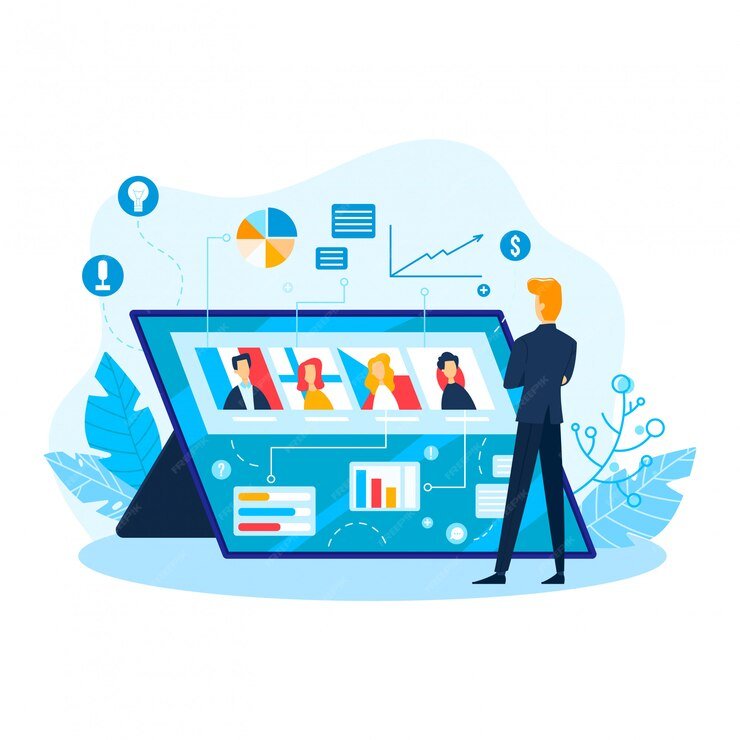In today’s dynamic work environment, especially with the rise of remote work, screen monitoring software has become an essential tool for organizations aiming to enhance productivity, ensure accountability, and maintain security. When selecting the right screen monitor software, it’s crucial to consider various features that can optimize its effectiveness. Here, we delve deeper into the key features to look for in screen monitoring software.
1. Real-Time Monitoring
Real-time monitoring is a cornerstone feature of effective screen monitoring tools, allowing managers to gain immediate insights into employee activities.
- Live Screen Streaming: This feature enables managers to view employee screens in real time. It’s particularly useful for identifying distractions or inefficiencies as they occur. For instance, if a team member is spending excessive time on non-work-related tasks, managers can intervene promptly and guide them back to their responsibilities.
- Instant Alerts: Real-time monitoring often includes alerts for specific activities, such as accessing unauthorized websites or applications. This proactive approach not only helps in maintaining compliance with company policies but also fosters a culture of accountability among employees, as they are aware that their actions are being monitored.
2. Automated Screenshot Capture
Automated screenshot capture is a valuable tool for tracking employee activity throughout the day.
- Scheduled Screenshots: The ability to take screenshots at defined intervals helps managers visualize what employees are working on without needing constant oversight. For example, capturing screenshots every 10 minutes can provide a comprehensive view of an employee’s workflow throughout the day.
- On-Demand Screenshots: Some software allows managers to capture screenshots on demand, providing flexibility in monitoring when needed. This feature can be particularly useful during critical project phases or when addressing specific performance concerns
3. Activity Tracking
Comprehensive activity tracking is essential for understanding employee productivity levels.
- Application Usage Monitoring: This feature tracks which applications are used during work hours and categorizes them as productive or unproductive. By analyzing this data, managers can identify patterns that contribute to or hinder productivity. For instance, if employees frequently use social media during work hours, it may indicate a need for better time management strategies.
- Website Tracking: Monitoring websites visited by employees provides insights into potential distractions and helps guide discussions about time management and focus. If certain websites are consistently accessed during work hours, it may warrant a conversation about setting clearer expectations regarding acceptable online behavior.
4. Detailed Reporting
Robust reporting capabilities are vital for analyzing performance metrics over time.
- Performance Reports: Good screen monitor software should generate detailed reports that showcase employee activity levels, including active time, idle time, and productivity percentages. These reports can help identify high performers as well as those who may need additional support or resources.
- Customizable Dashboards: Dashboards that allow users to customize views based on specific metrics can help managers focus on what matters most to their teams. For example, a manager might want to track application usage trends over time or compare productivity levels across different departments.
5. User-Friendly Interface
An intuitive user interface is crucial for ensuring that both managers and employees can navigate the software easily.
- Ease of Use: The software should be straightforward to use, minimizing the learning curve for new users and encouraging widespread adoption across the organization. A clean design with clear navigation options makes it easier for employees to log their activities and for managers to access reports.
- Mobile Access: Many solutions offer mobile applications that allow managers to monitor activities on the go. This flexibility ensures that oversight can continue even when managers are not at their desks, enhancing responsiveness and engagement with remote teams.
6. Integration Capabilities
The ability to integrate with other tools is essential for streamlining workflows and enhancing productivity.
- Compatibility with Existing Tools: Look for screen monitor software that integrates seamlessly with project management tools, HR systems, and communication platforms. This integration can enhance collaboration and data sharing across teams, making it easier to manage projects effectively.
- API Access: Some solutions offer API access, allowing organizations to customize integrations based on their unique needs. This capability ensures that the monitoring tool fits smoothly into existing workflows without disrupting established processes.
7. Data Security Features
As organizations increasingly rely on remote work, data security becomes paramount.
- Encryption Protocols: Ensure that the software uses strong encryption methods to protect sensitive data collected during monitoring. This protection is crucial not only for safeguarding company information but also for maintaining employee trust in the monitoring process.
- User Access Controls: The ability to set permissions based on user roles helps safeguard information and ensures that only authorized personnel have access to specific data. Implementing strict access controls minimizes the risk of data breaches and enhances overall security.
8. Compliance Management
For many industries, compliance with regulations is critical.
- Audit Trails: Good screen monitor software should provide audit trails that log user activities and changes made within the system. This feature is essential for demonstrating compliance during audits and ensuring accountability within the organization.
- Policy Enforcement Tools: Look for features that help enforce company policies regarding acceptable use of technology and data handling practices. By ensuring adherence to established guidelines, organizations can mitigate risks associated with non-compliance.
Conclusion
When selecting screen monitor software, it’s essential to consider features that enhance real-time monitoring, automated screenshot capture, activity tracking, detailed reporting, user-friendliness, integration capabilities, data security, and compliance management. By focusing on these key features, you can choose a solution that not only meets your organization’s needs but also fosters a culture of accountability and productivity among your remote teams.
To explore Mera Monitor’s comprehensive screen monitoring features further and see how they can benefit your organization.


